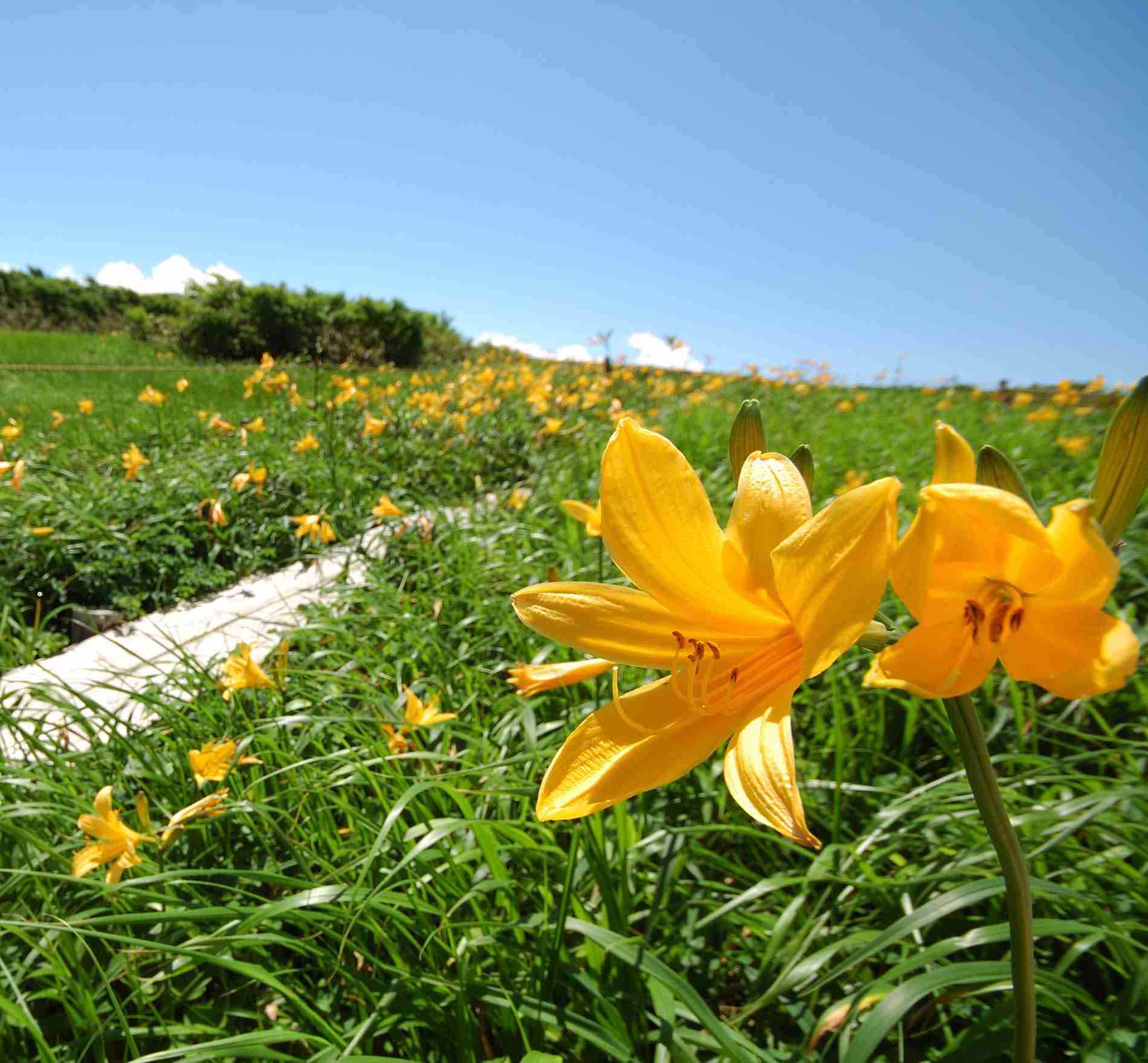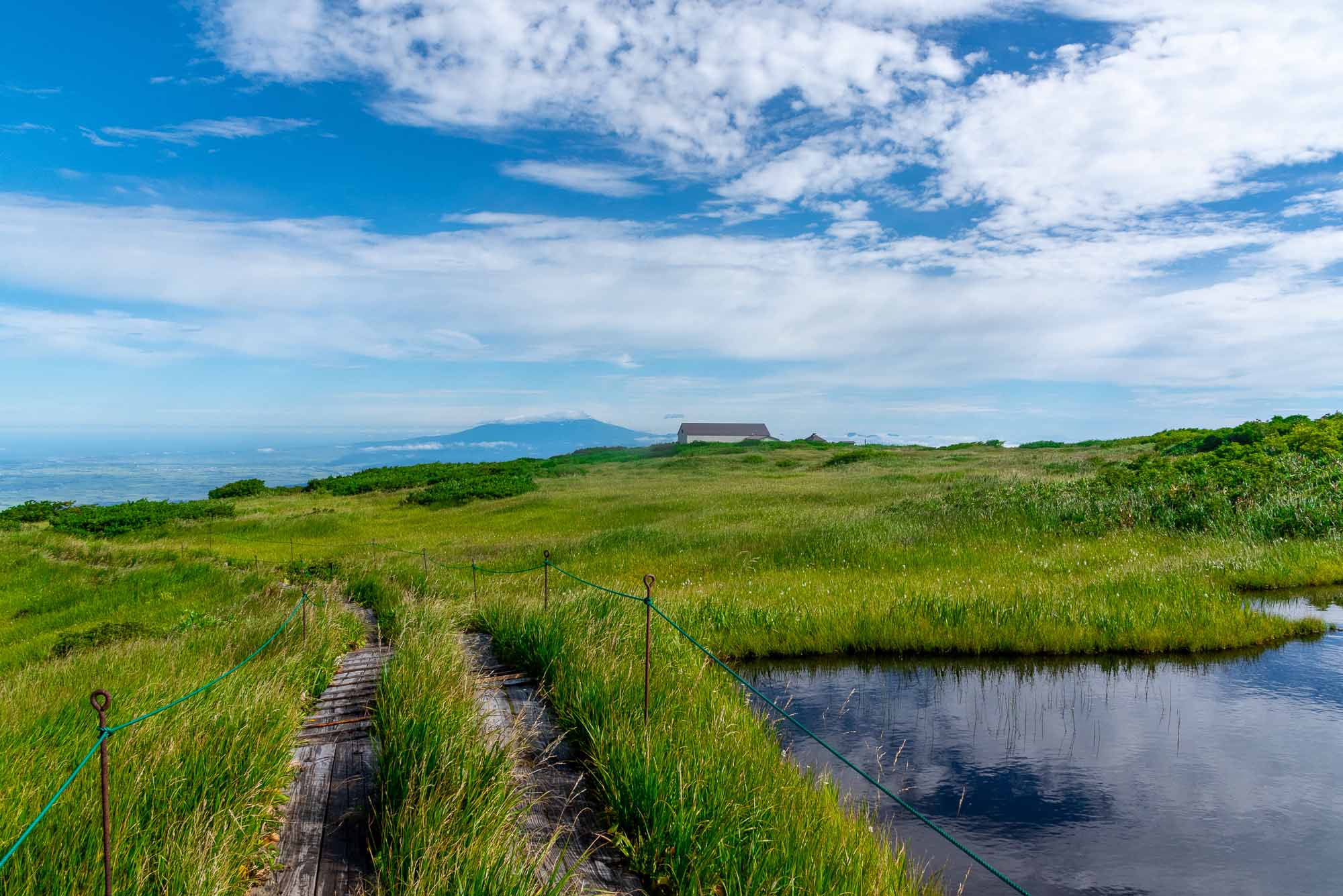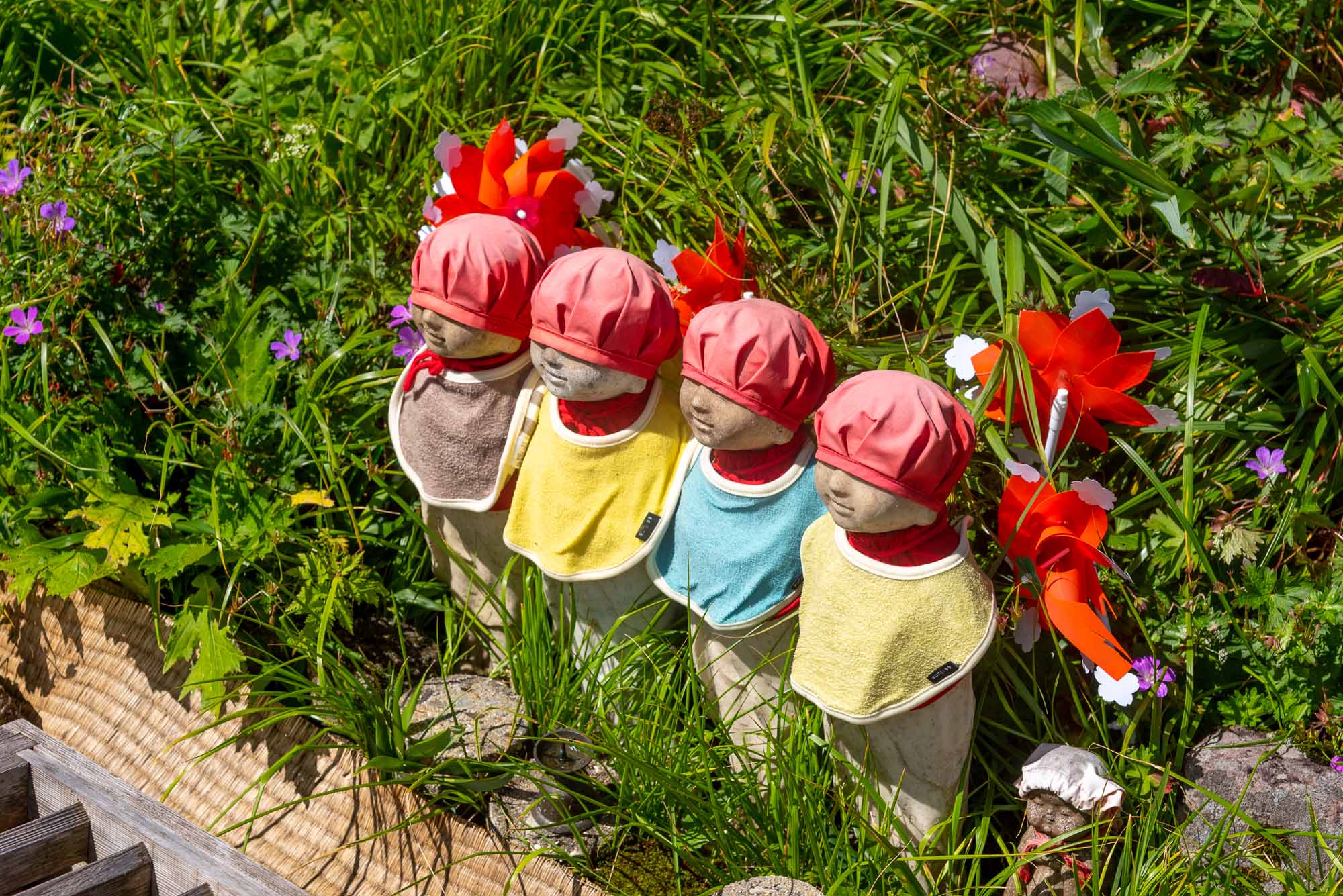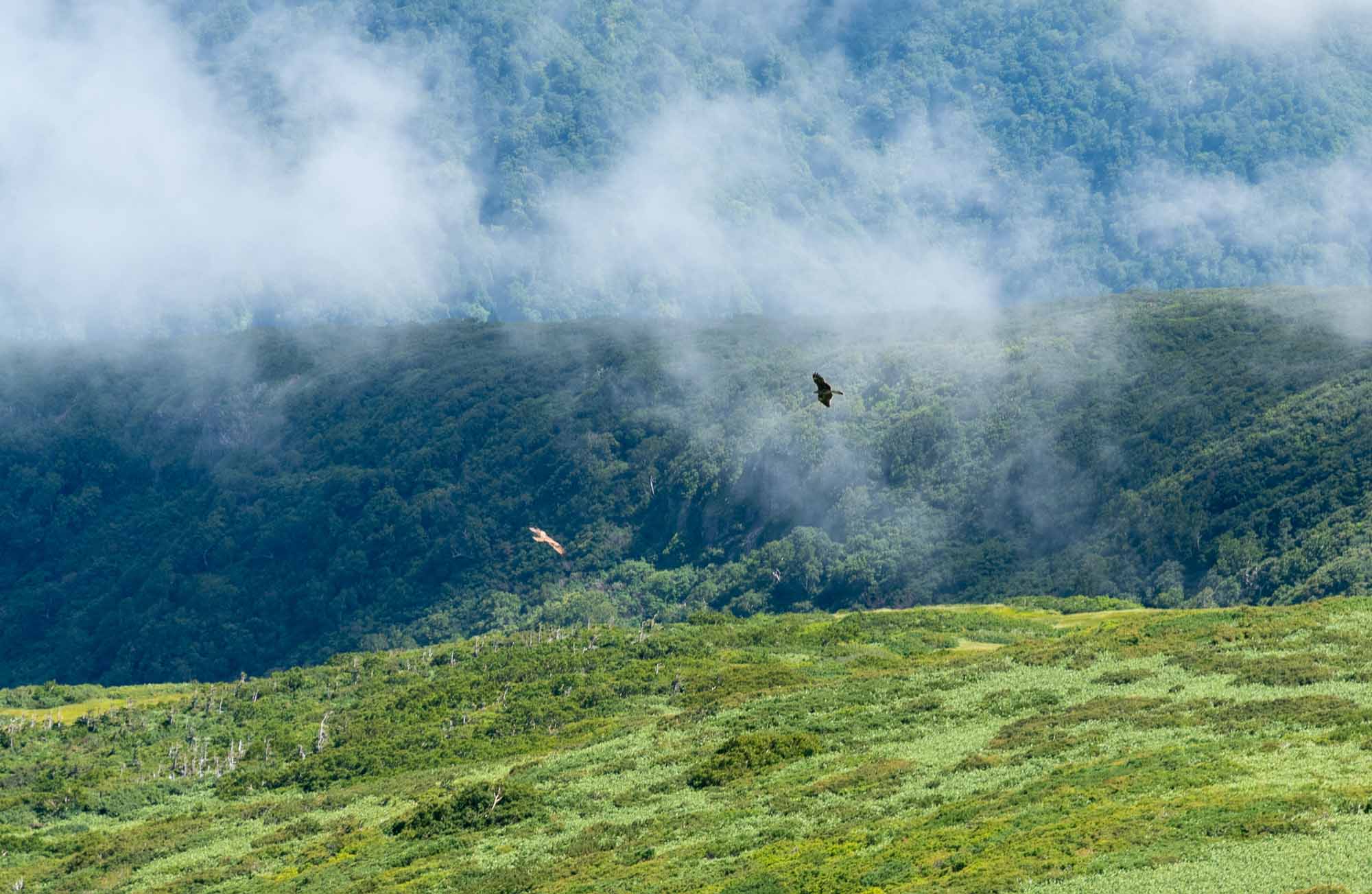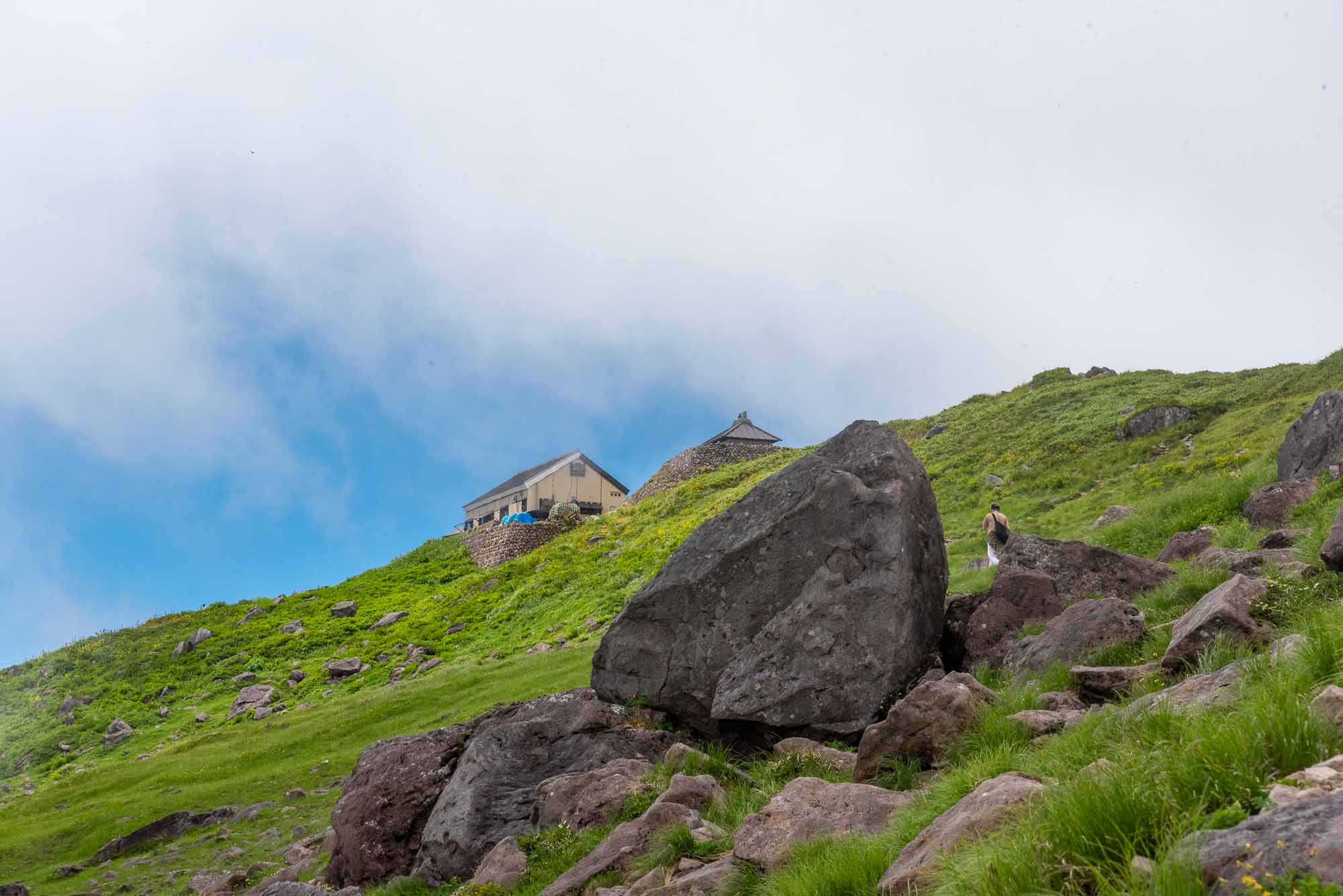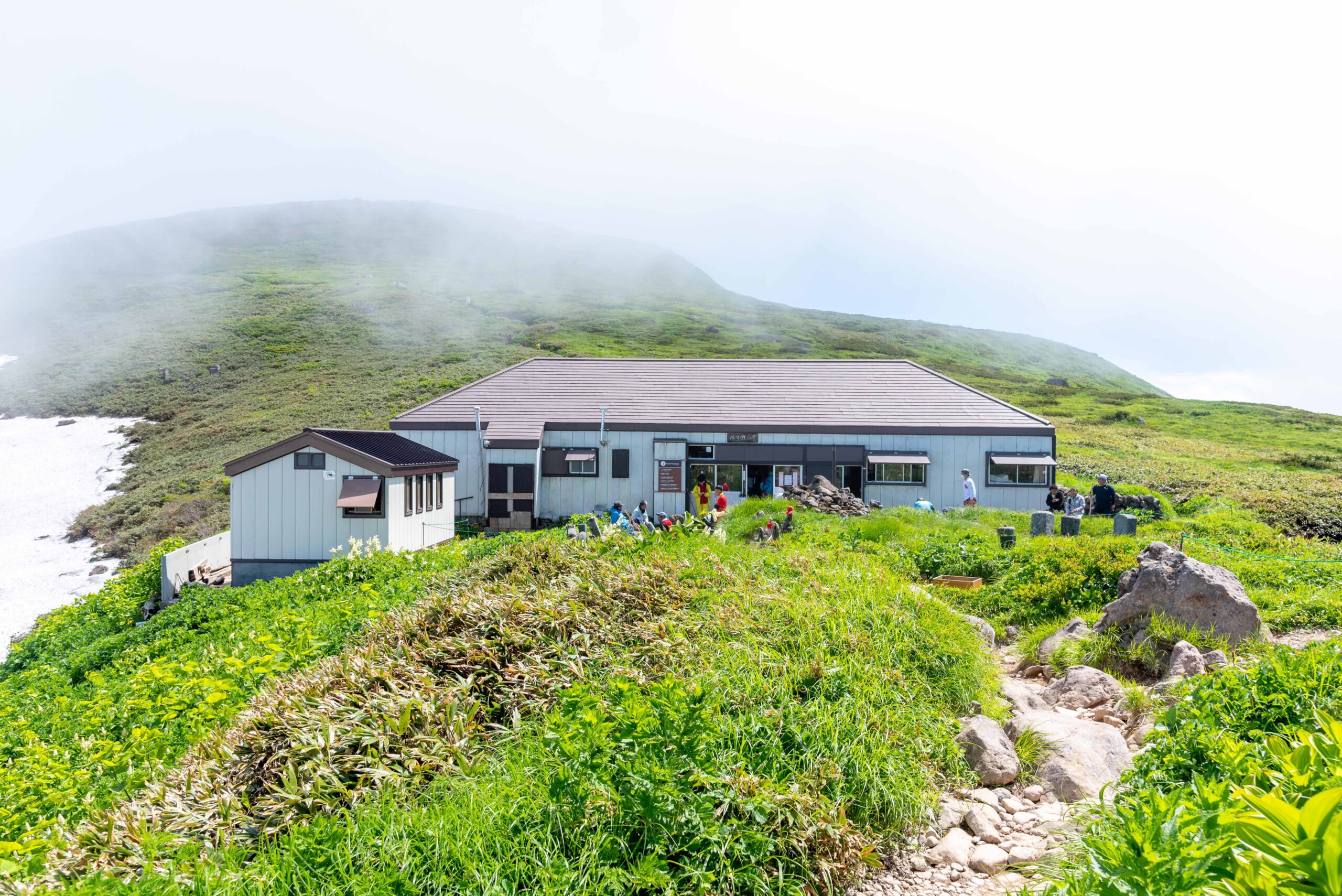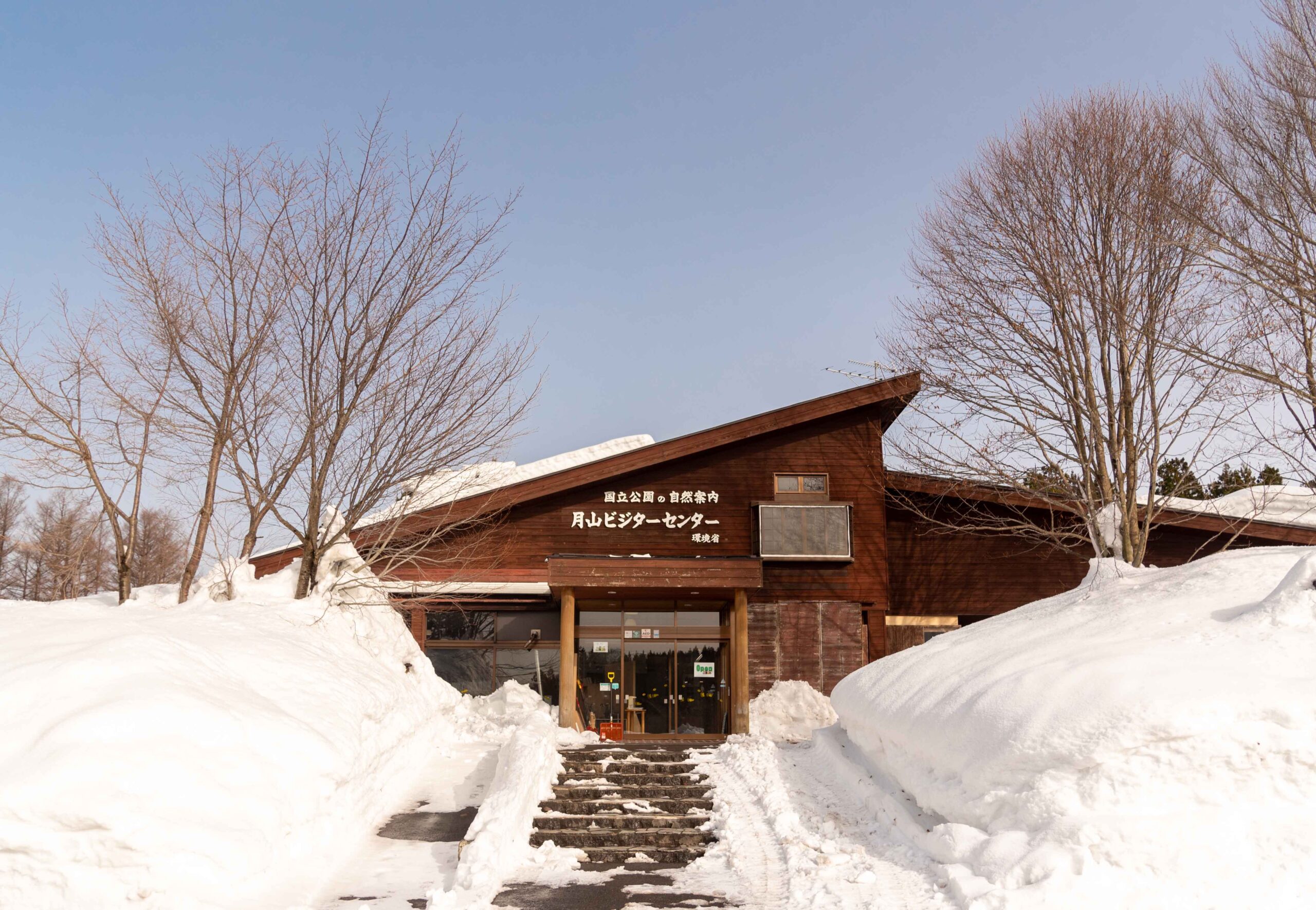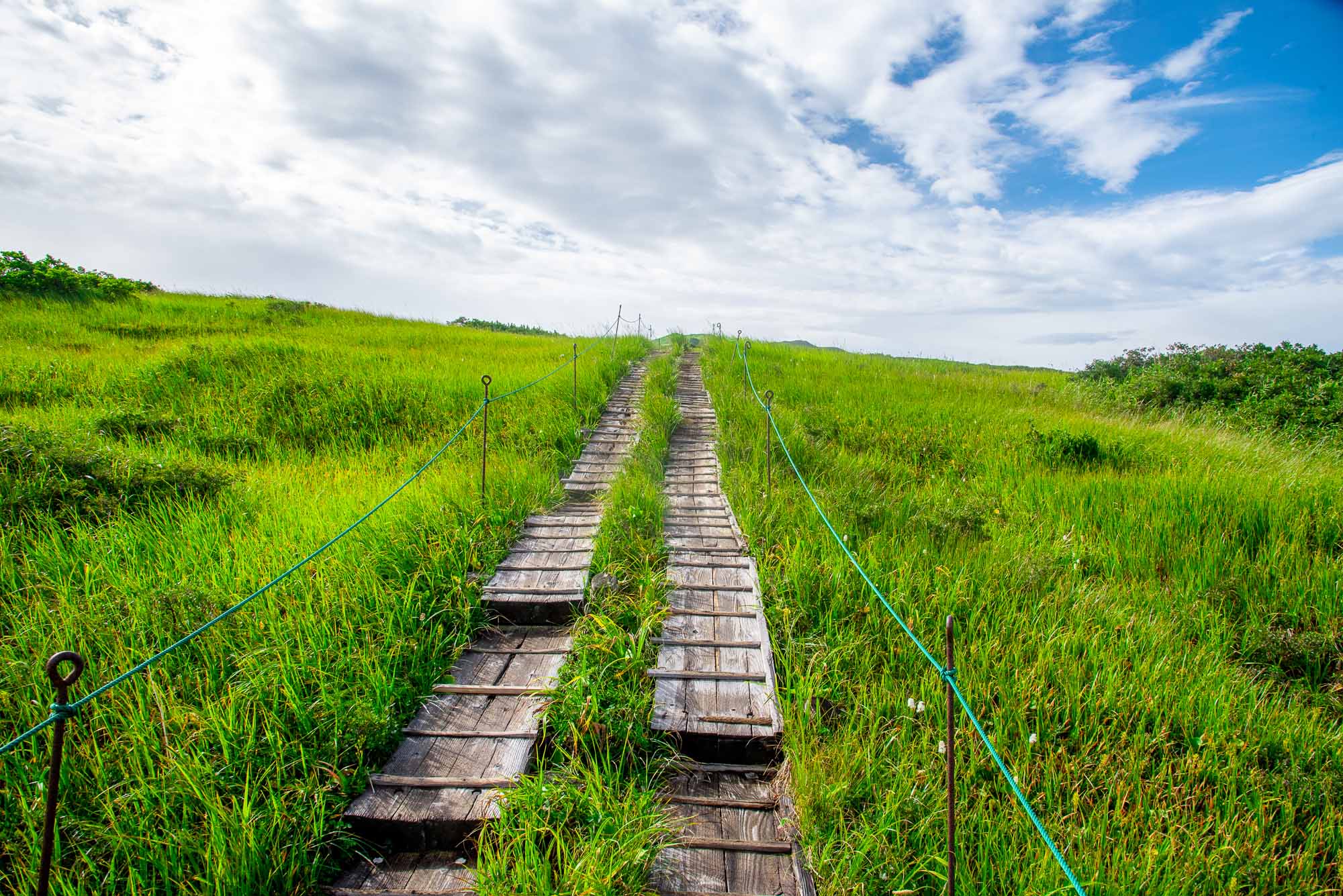
Mt. Gassan 月山
THE MOUNTAIN OF THE MOON
―1984m. high
Mount Gassan, the oldest and tallest mountain of the Dewa Sanzan, has always been the core of the Dewa Sanzan’s mountain worshipping practices. Many people automatically think of Mt. Haguro when referencing the Dewa Sanzan; however, the oldest mention of the Dewa Sanzan in historical writings talks about a “Gassan Shrine.” Built between 712 and 773, this is proof that Mount Gassan was worshipped long before the two other mountains.
The Shinto deity worshipped on Mt. Gassan is Tsukiyomi 月読命, the incarnation of the moon.
Who is Tsukiyomi?
The founding god of Japan, Izanagi, was married, but his wife died giving birth to the Fire god. When Izanagi visited his beloved wife in the afterworld, his soul became stained by the impure view of his wife’s rotten corpse. To cleanse his sins away, he bathed in holy water. Upon cleaning his left eye, the Sun Goddess, Amaterasu, was born; when he cleaned his right eye, the Moon God, Tsukiyomi was born. Tsukiyomi was ordered to reign over the world of the night—and the world of the Dead.
Later, Tsukiyomi went on to kill the goddess of crops, Ukemochi no kami (保食神). The Sun Goddess (Amaterasu) became angry at her brother and punished Tsukiyomi by ordering him to live apart from her. This was the beginning of day and night separation. In order to make amends, Tsukiyomi promised to help agriculture on Earth.
This solidified the link between the god of the moon and crops and food. Tsukiyomi is forever thought of as the god that rules over the night, the world of the Dead, and the one that protects agriculture.
Information
| Related link | ● Part of the National Park of Bandai-Asahi ● A National Natural Monument ● One of the 100 Famous Japanese mountains(Wikipedia) |
|---|---|
| HIKING SEASON | JULY 1st - SEPTEMBER 15TH |
| DON'T MISS THE BUS! | If you want to go to Mt. Gassan via public transportation, you will need to get off at Gassan Hachigome 月山八合目. Bus timetable |
| IT'S A RELIGIOUS PLACE... | We welcome all kinds of hikers! However, we would like you to remember this is sacred ground. Therefore, please be respectful and considerate of the people around you by remaining quiet and making sure trash ends up in waste bins. Thank you! |
| COME WITH THE APPROPRIATE GEAR ! | Even if it is hot in Tsuruoka City, at Mt. Gassan it can be very cold! Please bring warm jackets, raincoats, hiking boots and sunglasses with you. |
| Required time: | Up (normal - slow pace, no pause):2 hours 30 minutes We recommend you to take 3 to 5 pauses of 5 to 10 minutes along the way. Down (normal - slow pace, no pause):2 hours |
| Don't forget to bring water with you! | Hiking Mt. Gassan can be challenging for some people! Bring cool clothes and lots of water supply before heading for adventure! |
| Official Website | https://thedewasanzan.com/ |
| Related Pages | Dewa Sanzan、 Mt. Haguro、 Mt. Yudono |
| Climbing map |

